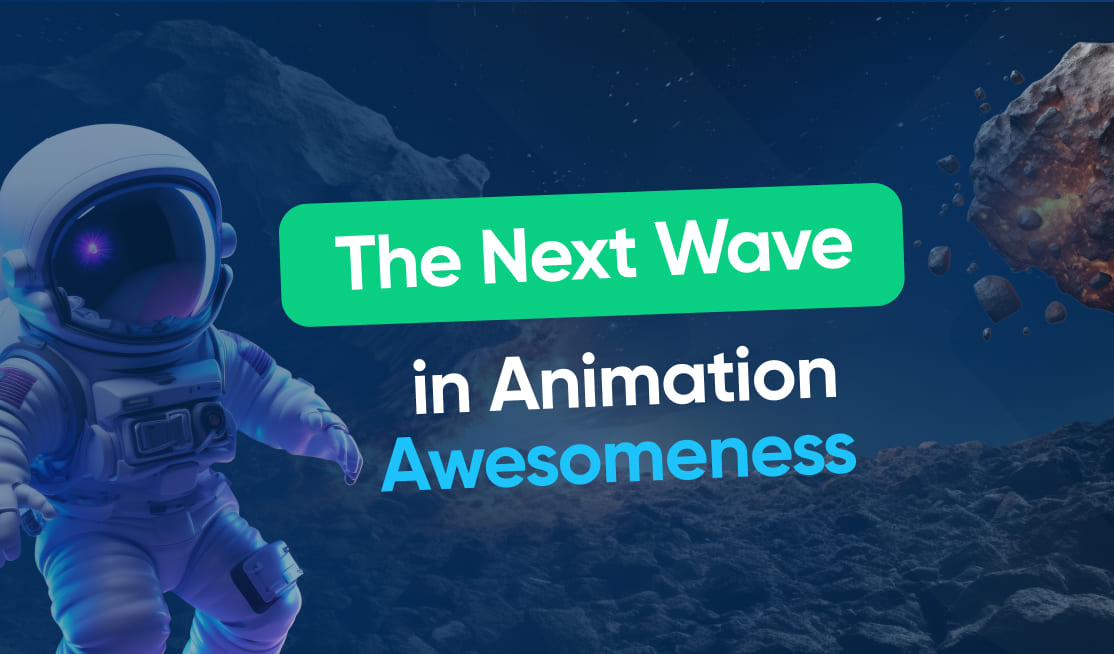
The field of 3D animation has come a long way since its inception. From its early days as a niche industry to its current widespread use in various sectors, the evolution of 3D animation has been driven by technological advancements and the increasing demand for visually captivating content. As we look ahead, it’s intriguing to ponder what the future holds for 3D animation and video animation services. Will it continue to innovate and push boundaries? Will it become even more immersive and interactive? Let’s explore the potential path of this exciting industry.
Understanding the Evolution of 3D Animation
Before diving into the future, let’s take a moment to appreciate the journey that 3D animation has undertaken. The early days of 3D animation were characterized by simple shapes and limited capabilities. However, as technology advanced, so did the possibilities within the realm of 3D animation. Early pioneers and visionaries laid the foundation for what we now consider to be cutting-edge 3D animation techniques.
One of the key figures in the early days of 3D animation was Ed Catmull, who co-founded Pixar Animation Studios in 1986. Catmull and his team were instrumental in pushing the boundaries of what was possible with computer-generated imagery (CGI). Their groundbreaking work led to the creation of the first feature-length film entirely made with 3D animation, “Toy Story,” which was released in 1995. This film marked a turning point in the industry, captivating audiences with its innovative storytelling and lifelike characters.
The Early Days of 3D Animation
In the early days, 3D animation was primarily used in the film industry, where it revolutionized the way audiences experienced visual effects. Films such as “Toy Story” and “Jurassic Park” showcased the potential of 3D animation, capturing the imaginations of viewers worldwide. The ability to bring inanimate objects to life and create vibrant, believable characters opened up a whole new world of storytelling possibilities.
During this time, 3D animation was a labor-intensive process that required a team of skilled artists and technicians. Each frame had to be meticulously crafted, taking into account lighting, textures, and movement. The rendering process alone could take hours or even days to complete, as computers struggled to keep up with the demands of creating realistic 3D imagery.
Despite the challenges, the early pioneers of 3D animation persevered, driven by their passion for pushing the boundaries of what was possible. Their dedication and innovation paved the way for the advancements that would come in the years ahead.
The Impact of Technological Advancements on 3D Animation
Technological advancements have played a crucial role in shaping the growth and development of 3D animation. From improved rendering capabilities to more powerful hardware, these advancements have significantly enhanced the visual quality and realism of 3D animations. Additionally, software innovations have made the creation process more accessible to artists, democratizing the field and enabling a broader range of creative voices to contribute to the industry.
One notable technological advancement in 3D animation is the introduction of ray tracing. This technique simulates the behavior of light in a virtual environment, resulting in more accurate and realistic lighting effects. With ray tracing, artists can achieve stunning visuals that were once only possible in the realm of traditional filmmaking.
Another significant development in 3D animation is the rise of motion capture technology. This technology allows animators to capture the movements of real-life actors and apply them to digital characters, creating more lifelike and expressive animations. Motion capture has been widely used in the gaming industry, where it has revolutionized character animation and gameplay.
As technology continues to advance, the future of 3D animation holds even more exciting possibilities. Virtual reality (VR) and augmented reality (AR) are emerging as new frontiers for immersive storytelling, with 3D animation playing a crucial role in creating realistic and interactive virtual worlds. The integration of artificial intelligence (AI) into the animation process also holds promise, as AI algorithms can assist artists in generating complex animations and realistic simulations.
In conclusion, the evolution of 3D animation has been a remarkable journey, driven by the passion and innovation of artists and the advancements in technology. From the early days of simple shapes to the lifelike characters and immersive virtual worlds of today, 3D animation continues to captivate audiences and push the boundaries of what is possible in the realm of visual storytelling.
The Current State of 3D Animation and Video Animation Services
In today’s world, 3D animation has become an integral part of various industries, extending far beyond the film sector. From advertising and gaming to architecture and medical visualization, 3D animation has found applications in a plethora of fields. Its ability to convey complex concepts in a visually engaging manner has made it an invaluable tool for professionals looking to captivate their audiences and stand out from the crowd.
The Role of 3D Animation in Various Industries
The adoption of 3D animation in various industries has been driven by its ability to communicate ideas effectively. For example, architects can use 3D animations to showcase building designs, allowing clients to visualize the finished product before construction even begins. Similarly, medical professionals can utilize 3D animation to explain complex surgical procedures or showcase the inner workings of the human body. The possibilities are truly endless, enabling professionals to push the boundaries of how they communicate and engage with their intended audiences.
The Increasing Demand for Video Animation Services
As the digital landscape continues to evolve, so does the demand for high-quality video content. The rise of social media platforms and streaming services has created a need for captivating visuals that can cut through the noise and leave a lasting impression. Video animation services have emerged as a powerful tool for businesses and individuals alike, enabling them to communicate their messages effectively, boost brand recognition, and captivate online audiences in an increasingly competitive digital landscape.
Predicting the Future of 3D Animation
As we gaze into the crystal ball of the future, several exciting trends and possibilities emerge for the world of 3D animation. Let’s explore some potential trajectories that this dynamic industry might take.
Emerging Trends in 3D Animation
One of the most intriguing trends in 3D animation is the integration of real-time rendering technologies. Real-time rendering allows for instant feedback and adjustments during the creation process, empowering artists to iterate and experiment more freely. This trend opens doors to new possibilities for interactive experiences, virtual reality applications, and immersive storytelling.
Another notable trend is the increased emphasis on realism and lifelike animations. As technology advances, we can expect 3D animations to become even more visually stunning and believable. The lines between computer-generated images and reality will continue to blur, offering audiences immersive experiences that were previously unimaginable.
The Potential of Virtual Reality and Augmented Reality in 3D Animation
Virtual reality (VR) and augmented reality (AR) have already made waves in the technology industry. As these technologies become more accessible and widespread, their integration with 3D animation holds immense potential. VR and AR can transport audiences into virtual worlds, allowing them to experience stories and narratives in a way that transcends traditional mediums. Imagine stepping into a fully realized 3D animated environment and interacting with characters and objects as if they were right in front of you.
The Future of Video Animation Services
Video animation services are poised for a transformative future. The rise of personalized video animation services is a trend worth monitoring. With advancements in AI and machine learning, video animations can be tailored to individuals, creating unique and engaging experiences that resonate on a personal level. From personalized advertisements to interactive educational content, personalized video animations have the potential to revolutionize how we consume and interact with visual media.
The Rise of Personalized Video Animation Services
Personalized video animation services have the power to forge deeper connections between brands and their target audiences. By tailoring content to specific demographics, preferences, and even individual users, brands can create experiences that feel personal and relevant. This level of customization can drive engagement and foster brand loyalty in an increasingly crowded online landscape.
The Influence of AI and Machine Learning on Video Animation
AI and machine learning are already revolutionizing various industries, and video animation is no exception. These technologies can automate time-consuming tasks, such as character animation and scene creation, freeing up artists to focus on more creative aspects of the process. Additionally, AI-powered tools can analyze audience data and optimize video animations for maximum impact, further enhancing the effectiveness of video animation services.
Challenges and Opportunities in 3D Animation and Video Animation
As with any industry, 3D animation and video animation services face their fair share of challenges and opportunities. Understanding and addressing these can help propel the industry forward.
Addressing the Challenges in 3D Animation and Video Animation
One of the significant challenges in the field of 3D animation is the constant need to adapt and stay ahead of technology advancements. As new techniques and tools emerge, animators must continuously update their skills and workflows to remain competitive. Additionally, the demand for high-quality content puts pressure on artists, animators, and studios to deliver exceptional work within tight deadlines.
Another challenge arises from the ever-evolving expectations and demands of audiences. As technology evolves, so do audience preferences and tastes. Animators must keep a finger on the pulse of audience trends to ensure their work remains relevant and engaging.
Seizing Opportunities in the Animation Industry
While challenges exist, the animation industry is ripe with opportunities. The increasing globalization and digitization of content consumption have created a growing market for animation services. Freelancers and small animation studios can now reach clients worldwide, enabling them to tap into a global pool of opportunities.
Moreover, the rise of online platforms and streaming services has opened up new avenues for content distribution. Animators and video animation service providers can leverage these platforms to showcase their work and gain exposure to a broader audience. The democratization of content creation tools has also lowered barriers to entry, providing aspiring animators and studios with the resources they need to bring their visions to life.
The Future is Bright for 3D Animation and Video Animation Services
As we peek into the future of 3D animation and video animation services, it’s evident that this exciting industry will continue to evolve and captivate audiences. Technological advancements, emerging trends, and new possibilities like VR and AR will push the boundaries of what is possible, creating immersive and engaging experiences for viewers worldwide. With the right blend of creativity, innovation, and adaptability, the future is bright for 3D animation and video animation services.


